Zero-Carbon Transportation: Beyond The Tailpipe


This article series is sponsored by 3Degrees and produced by the TriplePundit editorial team.
Companies seeking a lower carbon footprint are increasingly adopting electric vehicles and alternative fuels that offer zero, or at least carbon neutral, tailpipe emissions. However, fleet tailpipes are just one point in a complex web of emissions that involve vehicle manufacturers, as well as companies and their suppliers, consumers, clients, employees and contractors.
Decarbonizing that web beyond the tailpipe may seem daunting, but opportunities are growing for companies to tackle their transportation footprints through strategic carbon offsets as well as alternative fuels and vehicle electrification.
Why transportation?
Historically, coal-fired power plants have been the main driver of greenhouse gas emissions, and the global economic expansion of recent years has contributed to a worrisome increase in emissions from coal power plants.
In the U.S., though, the electricity generation sector has continued to shed coal at a rapid pace. Here, transportation has emerged as the single most impactful source of emissions.
The most recent U.S. Environmental Protection Agency inventory of domestic greenhouse gas emissions shows transportation edging past power generation, at 29 percent and 28 percent of total GHGs respectively.
Transportation emissions have the potential to pull further ahead in the coming years as the U.S. power generation sector continues to decarbonize, with both coal and natural gas giving way to more renewable energy.
Challenges and opportunities
While it's become more common for companies to invest in renewable energy to lower their emissions footprint from power generation, few companies currently attempt to offset transportation emissions.
Part of the problem is the difficulty in taking stock of those emissions throughout the value chain.
Nevertheless, measuring and addressing transportation is a challenge that can pay off on a bottom-line basis, as a strong correlation has emerged between a company’s stock performance and its willingness to disclose and manage greenhouse gas emissions.
For example, in a recent study, CDP (formerly the Carbon Disclosure Project) notes: “Corporations that actively manage and plan for climate change secure an 18 percent higher return on investment (ROI) than companies that don’t—and a 67 percent higher ROI than companies who refuse to disclose their emissions.”
No need to reinvent the transportation wheel
Fortunately, companies seeking an impactful decarbonization strategy for their transportation value chain do not have to engage in guesswork.
Scores of leading global companies including 3M, Ford, General Electric, Shell and many more have already “road-tested” the emissions inventory standards outlined in the Greenhouse Gas Protocol, which is currently the most widely-used accounting tool for greenhouse gas emissions.
The Protocol assigns a group or “scope” to emissions, based on the degree to which companies can exercise direct control over the source. Scope 1 covers emissions from sources that a company owns or otherwise controls. Scope 2 covers emissions that the company can control indirectly, through its energy purchases.
The most challenging group is Scope 3. It covers all emissions in the value chain, both on the supply side and for the end user, including emissions that the company has no control over.
Science-based targets and strategic carbon offsets
Despite the challenges involved in addressing Scope 3 emissions, more than 350 leading companies have already established Scope 3 targets that include transportation emissions as part of the global Science Based Targets initiative (SBTi).
SBTi enables companies to inventory their emissions and focus on strategic hotspots in line with global greenhouse gas targets. This science-based, holistic approach also helps companies focus their offset strategies in areas that directly impact their value chains.
The California-headquartered renewable energy and climate solutions specialist 3Degrees is one firm that recognizes the effectiveness of addressing Scope 3 goals through strategic carbon offsets.
Mark Mondik, the company’s vice president of carbon markets, describes how carbon offsets can be an especially effective strategy for companies that have little leverage over their downstream emissions.
The key is to think about carbon offsets as a “medium-term” solution that has a ripple effect on the entire transportation sector, contributing to decarbonization over the long run, Mondik said.
The online shopping network Etsy provides one example. The company has no direct control over shipping and transportation emissions related to millions of transactions on its site annually.
“We are talking to fleet owners and EV charging equipment owners about using their facilities for carbon offsets, so buyers like Etsy can pay for those offsets and help subsidize new charging stations,” Mondik explained.
Ride-sharing giant Lyft provides another example. The company does not own the vehicles used by its drivers, which means that virtually all of its fleet involves Scope 3 emissions. In turn, Lyft’s offset strategy revolves around reducing emissions in vehicle manufacturing, with an eye toward a future dominated by autonomous electric vehicles powered by 100 percent renewable energy.
The road to zero-carbon transportation
Though individual companies can contribute significantly to the decarbonization of transportation through fleet management and strategic offsets, consensus is building that the pace of change must accelerate globally in order to avoid the impacts of catastrophic climate change.
That means stronger policies and market incentives are imperative. “The fueling infrastructure we have now was built up over many years with public policy incentives,” Mondik noted. Winding down those entrenched incentives is a matter of dismantling outdated policies and creating new ones that address the need to accelerate climate action.
A policy-based approach is especially urgent considering the potential for the transportation sector to grow throughout the foreseeable future.
“The way we’re doing business these days, especially with e-commerce increasing, may have an impact on increasing transportation emissions,” Mondik notes. “Global trade also has a big impact on air and marine emissions. Meanwhile, the cost of transportation has come down and demand has gone up.”
In other words, zero-carbon transportation is not just a possibility. It is a necessity.
Image credits: Nabeel Syed and Denys Nevozhai via Unsplash
Know Your Purpose Before Your Company Takes a Stand


The pressure for companies to take stands on political, social and environmental issues is stronger than ever. But before your company embarks on such a journey, make sure everything your house is in order, advises the Toronto-based organization Canadian Business for Social Responsibility (CBSR).
For brands to take a stand for sustainability, they first need to identify their purpose and how they are effecting positive change, said Leor Rotchild, executive director of CBSR. Once that is clear, “the next step is to align themselves internally around that purpose and screen for inconsistencies,” Rotchild continued. “With their own house in order, purpose-driven companies have a responsibility to effect continued positive change through their supply chains, investor markets, industry associations and consumer base. It is not easy, so effectively taking a stand starts with a confident and inspiring purpose backed by measurable action.”
As a think tank and professional organization, CBSR’s role is to help accelerate sustainable innovation and inspire Canadian businesses to advance their corporate practices through peer-to-peer learning and best practice research, Rotchild added. CBSR works with a range of companies from different sectors including finance, energy, mining, and the food and beverage industry. The organization has recently been working harder to promote the Canadian way of doing business and share success stories, thereby being a partner to companies that seek to communicate their purpose.
One way CBSR helps companies evaluate their status and implement sustainable practices is through a framework it created called the Transformational Company Qualities, which is used to guide companies through a process that includes developing a social purpose and addressing supply chain risks and opportunities to engage staff, suppliers, investors, and industry associations, Rotchild noted.
CBSR supports employee activism as “an effective way to move employers toward a more inspiring purpose and/or a mechanism for holding employers accountable to their purpose,” Rotchild said. “When a company acts in a way that is inconsistent with that purpose, the employees are the first to see it and they have a responsibility to call it out and find solutions when it becomes apparent.”
Canadian businesses have some unique challenges when it comes to implementing sustainability practices – starting with its history and demographics.
“Canada has a very different history with its indigenous population than does the U.S., and there are many more considerations and complexities when operating or building infrastructure in major parts of the country,” according to Rotchild.
One example would be Canada’s lucrative fossil fuels sector, the projects of which have often sparked protests as the country’s First Nations have said such developments encroach on their lands. At times, compromises have been reached to ensure Canada’s indigenous groups have a stake in pipeline or hydropower projects so they can have a voice and share the economic benefits. Disputes over various oil and natural gas pipelines continue to be contentious, however.
Rotchild also noted that Canada also long has been considered a responsible developer of natural resources; transitioning toward low carbon-based resources could have a significant impact on Canadian workers and the economy. Visible shifts are underway: Last month, a Calgary-based company got the green light to build what could be Canada’s largest solar power installation in oil-rich Alberta.
In addition, “Many leading American firms operate in Canada, but their Canadian subsidiaries often do not have enough resources or autonomy to carry out the same sustainability programs that they do in the U.S.,” he added.
Therein lies plenty of opportunities for CBSR to become a valuable partner in the Canadian business community.
An area CBSR is trying to address is improving sustainable practices in supply chains; Canada's public buying takes place at a more decentralized level than other OECD countries, according to Rotchild. A new system is emerging that involves companies partnering with government agencies to incorporate social and environmental criteria into public procurement decisions, he added.
CBSR is participating in this process through its work as a founding member of the Coalition for the Advancement of Sustainable Procurement (CASP) along with the Center for Greening Government (CGG), Espace Québécois de Concertation Sur Pratiques D’Approvisonnement Responsible (ECPAR), HP Canada, Municipal Collaboration for Sustainable Procurement (MCSP), Ontario Public Buyers Association (OPBA) and the Recycling Council of Ontario (RCO).
“Influencing more centralization and sustainability thinking can reward sustainability leaders at the bid process and lead to improved social and environmental impacts,” Rotchild said.
Earlier this year, CBSR began sharing some of the nation’s best strategies through a new Do Business Like A Canadian platform as a way to discuss national sustainability-related challenges and “create constructive spaces to discuss values-based solutions,” according to Rotchild. Several Canadian business case studies were developed as part of the campaign to launch the initiative, he added.
Don’t forget: In a few weeks, we’ll be hosting 3BL Forum: Brands Taking Stands – What's Next, October 29-30, at MGM National Harbor, just outside Washington, D.C. Together, our 90-plus speakers promise to make this two-day event one that is fast-paced, high-octane and invaluable with their perspectives on the latest in the environmental, social and governance (ESG) community. We're proud to have CBSR as a partner for this event.
We're pleased to offer 3p readers a 25 percent discount on attending the Forum. Please register by going to the 3BL Forum website and use this discount code when prompted: NEWS2019BRANDS.
Image credit: Alex Shutin/Unsplash
Calls Grow for Urgent Action on Ocean Plastic Crisis

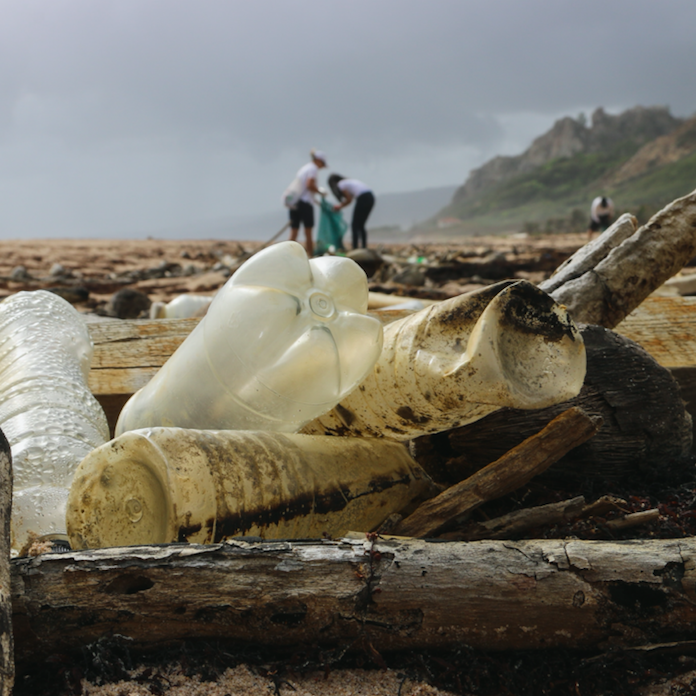
The fight against ocean plastic pollution is heating up, with companies, cities, states, and new public-private partnerships all vowing to take action to reduce the amount of plastic waste that ends up in the natural environment and, ultimately, our oceans. But there’s one entity that has failed to act: The United States federal government. That, alongside the growing awareness that we need rapid action, is why environmentalists are increasingly pushing for national legislation.
"The U.S. has often been an international leader on environmental issues, but unfortunately it’s falling behind other countries on addressing the plastics crisis,” Christy Leavitt, campaign director for the NGO Oceana, said in a press statement.
Leavitt recently gave testimony on this topic to Congress, the branch of the U.S. government that many hope can lead on federal action. Right now, such a sense of urgency is missing. Cities have certainly acted: For example, San Francisco’s plastic bag ban eliminated 5 million bags per month, and shops at the city’s international airport no longer offer plastic water bottles; several states have passed similar measures as well.
“U.S. cities, towns, counties and states are not waiting for federal action and are instead leading the way in regulating single-use plastics,” Leavitt said. “The federal government should learn from these actions and implement national policies to stem the flow of plastic into our oceans."
Plastic pollution has, in the past few years, become a major global concern. The stakes are high, as a study released in 2016 by the nonprofit Ocean Conservancy shows our stark future. If we don’t make drastic changes soon, by 2050 our oceans could have more plastic in them than fish. There’s evidence now that even rainfall contains plastic, which is also now found in the most remote places on the planet.
“Despite the ocean’s importance to life on Earth and the livelihoods of billions of people around the world, humanity has altered or destroyed marine ecosystems and driven marine species to the brink of extinction,” Leavitt said. “And now, as one scientist put it, the oceans are literally spitting plastic back at us with every wave.”
Thus far, there has been some meaningful corporate action on this front, with broad partnerships being formed. These include the Ellen MacArthur Foundation’s New Plastics Economy Global Commitment, which includes dozens of companies representing 20 percent of all global plastic packaging production; the Alliance to End Plastic Waste; and NextWave Plastics, whose member companies are developing a supply chain for ocean-bound plastics. Large brands are taking their own ambitious steps, like PepsiCo’s recently announced target to reduce its use of virgin plastic by 35 percent by 2025.
But from the perspective of many NGOs, more needs to be done.
“Corporations responsible for the throwaway packaging must redesign their production and start investing in alternative packaging materials and delivery systems that are ecologically sustainable for the people and the planet,” Beau Baconguis, regional plastics campaigner for the advocacy group GAIA Asia Pacific, said in a press statement.
Even taken together, these efforts are not yet nearly enough. There are thousands of companies of all sizes that utilize single-use plastic, including many that are not consumer-facing and thus have less pressure to change their practices. That is why there is a need for governments to set standards and limit the use of single-use plastic, so that bad actors do not negate the positive impacts of ethical and sustainable brands.
This becomes even more important when taking into consideration the fact that the plastic industry has been fighting against bans, or any meaningful action, even as it professes to want to solve the problem.
For example, an investigation published in The Intercept in July uncovered how the American Progressive Bag Alliance—a lobbying group of the Plastics Industry Association, which includes Shell, Exxon Mobil, Chevron Phillips, DowDuPont and Novolex as members—has backed bills that restrict plastic bans or regulations in states like Tennessee. We need strong national legislation to preempt the plastic industry from spreading their dangerous rhetoric across the country—and putting the natural environment at danger.
There are many ways this could be done. Indonesia, the world’s second largest source of oceanic plastic pollution, is considering a plastic tax alongside an expansion in incineration, which carries its own concerns. The European Parliament recently approved a wide-ranging ban on single-use plastics.
We know ocean plastic is causing a global crisis. Now it's time to find solutions. While partnerships and moves like PepsiCo’s are welcome, if companies really want to show their commitment to reducing plastic waste, they should push for strong legislation in Congress that is similar to what is unfolding in the European Union and Indonesia. Only then can we begin to solve this huge, global problem.
Image credit: Brian Yurasits/Unsplash
Will Corporate SDGs Alignment Save the Planet? Not Without a Sustainability Strategy
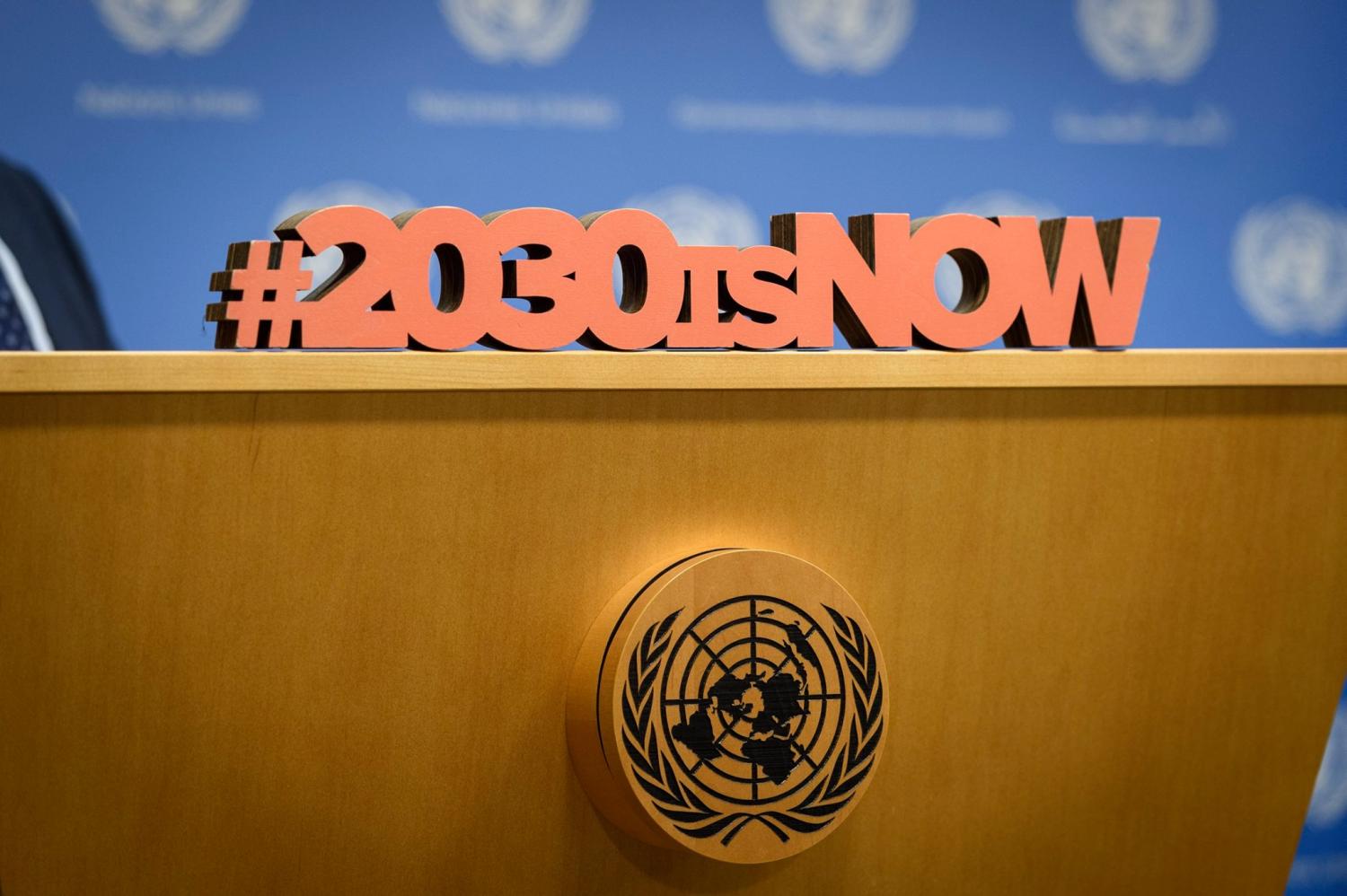

We're seeing more SDG-washing, where companies use the UN SDGs logo and claim to be sustainable. How do you prevent this?
As sustainability has shifted from a “nice to have” to a “must have” corporate mandate, alignment with the SDGs has been positioned by many as a method to help boost corporate sustainability credibility.
On one hand, it’s progress that the private sector is improving its ESG (environmental, social and governance) performance and looking at its impact on the world. But at the same time, we are also seeing SDG-washing, where companies use the UN SDGs logo and claim to be sustainable. How do you prevent this?
The business case
As public opinion of business has shifted, especially in recent years, CEOs and boards now understand their responsibility is not only to their shareholders, but also to their employees, communities and the environment.
In theory, aligning with the SDGs fits within the broader responsible business movement. While a focus on the Global Goals creates opportunities to enhance a company’s sustainability strategy and disclosures, these goals were not specifically intended to fit within a corporate structure. They were developed as goals for countries, not corporations, so companies must be thoughtful in their alignment approach to support the broader national goals while maintaining a connection to their existing corporate and sustainability objectives.
A sustainability-first alignment approach
To make alignment meaningful and impactful, engagement with the SDGs must be rooted in a company’s core competencies and should be pursued as part of a strategic sustainability platform, not a substitute for one. Sustainable business creates opportunities for innovation, helps identify and mitigate risk and creates opportunities for leadership, growth and new partnerships. Stakeholders are already asking for this data. Investors want ESG disclosures to inform them on risk management and growth opportunities from all aspects of the business. NGOs review ESG reports to understand how companies contribute to social and environmental issues they champion.
Without a strong sustainability strategy in place, aligning with the SDGs puts companies at risk for “goal-washing.” It’s easy for companies to get negative publicity from this popular movement when they do not put the processes and operations in place to accomplish these crucial goals.
Following the UN’s Economic and Social Council recent review of progress (or lack of progress in some cases) against the SDGs, it’s also important to remember new Global Goals will likely be put in place soon. With just over ten years left for this set of goals, having or creating a corporate sustainability strategy that supports core business and policy objectives is critical to ensuring consistency of operations and communications for decades to come, regardless of what the next set of goals includes.
Five steps to alignment
There are several steps that corporate leaders can take to evaluate and execute to ensure aligning with the SDGs makes sense for the business:
- Perform an ESG materiality assessment. This will provide clarity on the issues that stakeholders, including investors, need to know when making decisions about a company. Although there is much debate on the methodology and cost-benefit of such analyses, they do provide important insights that help companies prioritize policies and actions and which SDGs to potentially align with.
- Stakeholder engagement is paramount. As much as we all dislike silos, it is often how we operate. It’s critical to engage internal stakeholders across your company with different points of view and responsibilities as it is to hear from external stakeholders such as investors, consumers and NGO’s. As part of this assessment or to complement a previous assessment, reach out to stakeholders. Know which SDGs are most relevant to your corporate goals and business strategy and ask for input into their biggest concerns.
- Start small. Reflect. Be realistic. Can your company really help support 17 Global Goals and their 169 targets? Being thoughtful in which goals and how many you can successfully align with will benefit you in the short and long-term.
- Use material goals and targets. Data is at the core of sustainability strategy development and communications, and sound goals based on material issue-driven data provide a consistent framework to help guide decisions about the goals and how to implement them across the enterprise.
- Be transparent about your decision making. Whether you align or choose not to align, it’s important to be honest about your decision-making process and what alignment or going a different route does for your company.
Image credit: Global Goals for Sustainable Development/Facebook; Mary Mazzoni/TriplePundit
Energy Efficiency Alone Could Halve U.S. Emissions by 2050


TriplePundit is covering the U.N. General Assembly and Climate Week NYC through the weekend. You can follow our coverage here.
A resounding theme of Climate Week 2019 has been to find opportunities crucial for taking on climate action now. And some of these solutions are low-hanging fruit – as in being smarter with how we consume energy.
New research shows that energy efficiency measures can slash U.S. energy use and greenhouse gas (GHG) emissions 50 percent by 2050, moving the country halfway towards its climate goals.
The report, by the nonprofit American Council for an Energy-Efficient Economy (ACEEE), offers a road map for dramatically reducing energy waste. It identifies ambitious but cost-effective and technically possible measures that would avert emissions of nearly 2,500 million metric tons of heat-trapping carbon dioxide — equivalent to all emissions from cars, trucks, homes, and commercial buildings in 2050.
“Energy efficiency is an urgently needed climate solution,” ACEEE executive director Steven Nadel, a report co-author, said in a press release. “It can deliver swift, robust emissions cuts. We cannot wait to take action.”
That may partly satisfy impatient activists like 16-year-old Greta Thunberg and the estimated 4 million people inspired to join her on September 20 for what was likely the largest climate protest in world history. Thunberg, speaking to the UN General Assembly earlier this week, scolded world leaders for “empty words,” telling them, in a voice fierce with emotion: “For 30 years, the science has been crystal clear. How dare you continue to look away and come here saying that you're doing enough when the politics and solutions needed are still nowhere in sight?”
For the ACEEE, the solutions are well in sight, and its report, Halfway There: Energy Efficiency Can Cut Energy Use and Greenhouse Gas Emissions in Half by 2050, identifies 11 opportunities and related policies to achieve the necessary energy savings needed to reduce total U.S. greenhouse gas emissions by 80 to 100 percent by 2050.
Transportation, which in the U.S. is currently in the midst of a slow transition to all-electric vehicles, would deliver nearly half (46 percent) of the emissions reductions. Buildings would deliver a third and industry a fifth. For energy savings, building would deliver 40 percent of the total, followed by transportation (32 percent) and industry (27 percent).
In each of these three sectors, the report outlines what the next 30 years could look like if industry leaders seize the opportunities. Within the transportation sector, a significant shift to electric cars and trucks and continued fuel economy gains under new standards could reduce vehicle carbon emissions by approximately 50 percent. Less driving in cars and light trucks, improved freight system efficiency, and more-efficient airplanes could further cut emissions.
Within buildings, new homes and commercial offices could cut their emissions by 70 percent with efficient design and the use of cleaner electricity. Existing homes and buildings can slash emissions with energy-efficient upgrades, smart control technologies, and electrification of heating and cooling. Adding to total emissions cuts are updated efficiency standards for appliances and equipment and growth in the Energy Star program.
Finally, the industrial sector could deliver substantial emissions cuts with strategic energy management, smart manufacturing, industrial process improvements (including electrification strategies), changes in feedstocks and new process technologies and materials.
Energy efficiency measures have already proved to be an effective tool for climate mitigation, noted Kathleen Gaffney, co-author of the report: “It’s already made an immense difference. Without efficiency measures implemented since 2000, global emissions in 2017 would have been 12 percent higher.”
“The good news is that we can start right now by investing more in energy-efficient appliances, buildings, vehicles, and industrial plants,” Lowell Ungar, ACEEE senior policy advisor and report co-author, added. “But to achieve maximum emissions reductions, we need political and financial investments that go far beyond business as usual. If we do so, the 2050 payoff will be impressive.”
The report says government policies and programs alone would deliver about $700 billion a year in energy savings by 2050. Plus, the authors note, such investment will create more jobs, boost grid resilience, reduce air pollution and improve people’s health.
Business leaders who want to be aggressive on energy efficiency, however, face an uphill battle with the Trump administration, which is moving to weaken efficiency standards for lightbulbs, appliances and vehicles.
Image credit: Pixabay
Mars Commits to 1.5C Climate Goals with ‘Pledge For Planet’ Plan


Not moving fast or far enough has been a rallying cry during Climate Week, with young activists suing carbon-polluting countries over the climate crisis, and UN Secretary-General António Guterres demanding “a climate action summit, not a climate talk summit.”
This week food products giant Mars Inc. made clear it was listening, announcing its new #PledgeForPlanet initiative to further reduce GHG emissions from its direct operations in line with the most ambitious aim of the Paris Agreement – to limit global temperature rise to 1.5 degrees Celsius. The latest report from the Intergovernmental Panel on Climate Change (IPCCC) warned of catastrophic consequences should global warming exceed 1.5°C.
The march to aggressive climate targets
Mars joins 28 companies with a total market capitalization of $1.3 trillion that are also stepping up by committing to setting 1.5°C climate targets. First movers include Acciona, AstraZeneca, Banka BioLoo, BT, Dalmia Cement Ltd., Eco-Steel Africa Ltd., Enel, Iberdrola, KLP, Levi Strauss & Co., Mahindra Group, Natura &Co, Novozymes, Royal DSM, SAP, Signify, Singtel, Telefonica, Telia, Unilever, Vodafone Group PLC and Zurich Insurance, among others, collectively representing over one million employees from 15 sectors and more than 15 countries.
Of the 28 companies, BT, Levi Strauss & Co. and SAP already have 1.5°C-aligned reduction targets covering greenhouse gas emissions from their operations.
Notably, according to Carbon Tracker, none of the large oil companies are “Paris aligned.”
Suppliers asked to join Mars on the Pledge
In addition to ramping up GHG emissions reduction in its own operations, as part of "Pledge for Planet" campaign, Mars is calling on all its suppliers to participate in this program by:
- Setting science-based targets.
- Signing on to The Climate Group’s RE100 (a global corporate leadership initiative bringing together influential businesses committed to 100 percent renewable electricity).
- Embracing a future with renewable energy at the center of plans for direct operations.
Olam, which supplies Mars with ingredients such as cocoa and certified palm oil, has already signed on, according to the company.
Taking action on renewables and reducing emissions
A decade ago, Mars committed to achieve 100 percent renewable energy in its operations by 2040 and today is more than halfway towards that goal. In recent years, the company has been more aggressive in its drive to meet these goals.
In 2017, Mars announced a $1 billion Sustainable Generation Plan to fight climate change; part of that promise included more investments in wind and solar installations worldwide. The company also promised to cut greenhouse gas emissions by 27 percent by 2025 and 67 percent by 2050.
The Pledge for Planet initiative is designed to accelerate the pace of those commitments. And it’s important to keep in mind what’s driving Mars to take on these challenges; after all, this is a legacy company that is still privately-owned and as such, does not have to answer to shareholders (and quite frankly, most stakeholders) to the degree a publicly-owned company is expected.
Mars CEO Grant F. Reid said in a press release: “Climate change is a real and tangible threat to society. For example, in our business, we already see it in the risk to livelihoods for smallholder farmers who provide most of our raw ingredients.”
“Risks to the resiliency and sustainability of our supply chain and the future of the farmers we work with is top of mind,” Reid added. “But, as a family business that thinks in generations and aspires to make a positive difference in the world, our responsibilities and our ambitions go beyond risk mitigation. We are committed to doing our part for the good of the planet.”
On its website, Mars also invites individual action to protect the planet as part of its Pledge, with ten areas of actions such as driving less, buying local produce, bringing reusable bags to the store, reducing waste and unplugging electronics.
According to Reid, Mars is “inspired by the youth movement demanding climate action and the role of all of us as individuals in driving change.”
TriplePundit is covering the U.N. General Assembly and Climate Week NYC through the weekend. You can follow our coverage here.
Image credit: David Greenwood-Haigh/Pixabay
Emboldening Climate Change Wallflowers – How Can We Help Them Reframe the Debate?
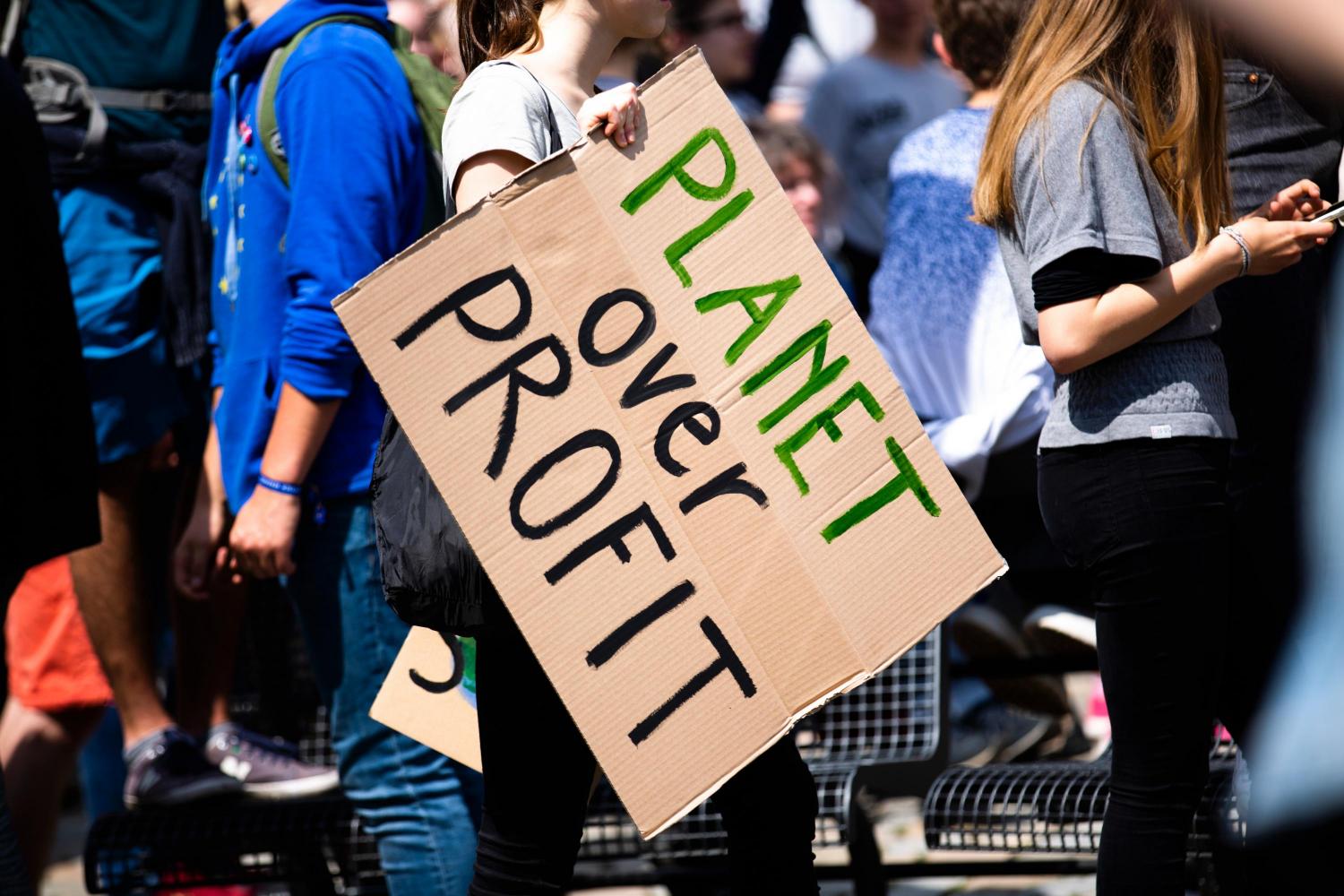
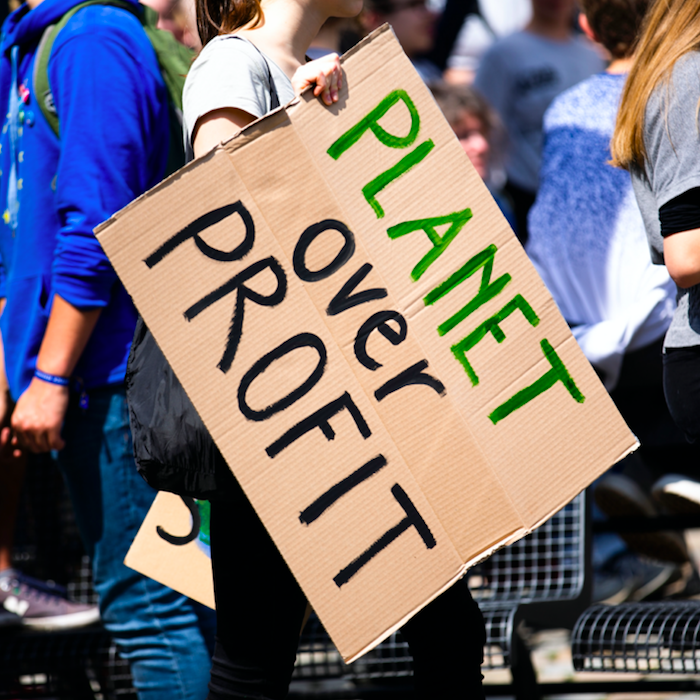
TriplePundit is covering the U.N. General Assembly and Climate Week NYC through the weekend. You can follow our coverage here.
The planet has everyone’s attention right now. Climate Week follows hot on the heels of global climate strikes, which followed hot on the heels of the recent Business Roundtable declaration.
You’re a TriplePundit reader so it’s probably safe to assume that you were already engaged. But I bet you’re surrounded by people – in work or at home – for whom the Climate Emergency hasn’t yet fully landed.
I reckon you have at least two people on speed dial who are bored of hearing about climate strikes, or embarrassed to admit that they acknowledge climate change. You may know people, as I do, who actually care deeply but suppress talking about it with the urgency it warrants because it would jeopardize how they are seen in their workplaces.
But these friends, like us, have not only heard the voices of school children, lobbyists and activists but now of serious business people and economic actors.
This is what persuaded me, some years ago, to come out of my shell and build a business supporting what I believed. I could see that environmentalism and pragmatism weren’t mutually exclusive. A masters in the circular economy taught me that innovation, growth and profit were in fact the keys to unlocking the solutions to climate change. I felt emboldened to make the link and start selling the business case for action.
In the last few months we have seen and heard investors (including the largest asset manager in the world), CEOs (including those of some of the largest businesses in the world), newspapers (including the Financial Times), lenders, insurers, policymakers, employees, consumers and others all say that we need to fundamentally readdress the source code of our current global economy.
All these players have all identified that a system based solely on shareholder primacy, that values profit at any cost, is the root cause of the social and environmental crises facing us today. That a take-make-dispose process based on margins and convenience carries too high a cost in real terms and needs to change.
More than that, we are seeing and hearing them step up to the plate; grasping the opportunity to be the solution, not the problem.
That’s really positive but it will take courage and tenacity and require support from all corners of the economy. It will require support from us all.
To reach a tipping point where enough people are acting with sufficient urgency, we need the crescendo to continue, and for everyone – from all walks, ages and ranks - to own part of the solution. We need our friends to decouple their beliefs from how they might previously have been perceived – and to re-frame this debate within their professional and economic comfort zones.
Otherwise, how easy it would be for us all put our heads back in the sand once the noise has settled and say “it’s too big a problem to fix," “it’s not realistic” or “I know, but what can I do about it?"
So my question to you, engaged 3p reader, is this: how can you persuade your climate wallflowers to re-invent their inner monologue so they feel comfortable taking action?
What dialogue could they begin in their workplaces? What decision making influence could they wield that will make a difference? How will they vote (with their decisions, money or feet) to turn the broken system on its head?
Encourage them to be bold.
This is the new agenda.
If not us, who? If not now, when?
Image credit: Markus Spiske/Unsplash
Amazon's Commitment to Rivian Reflects the Shift of Delivery Fleets to All-Electric Vehicles
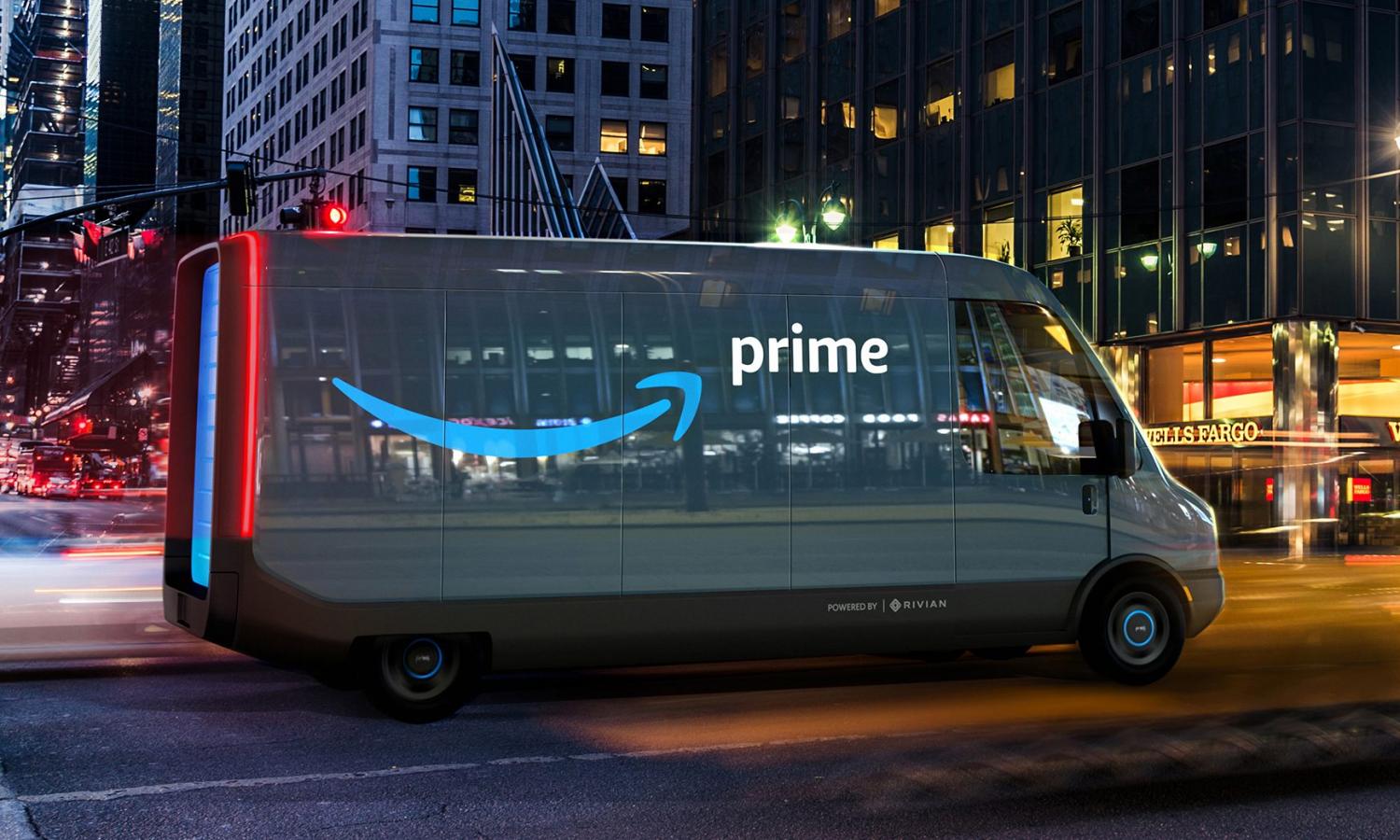
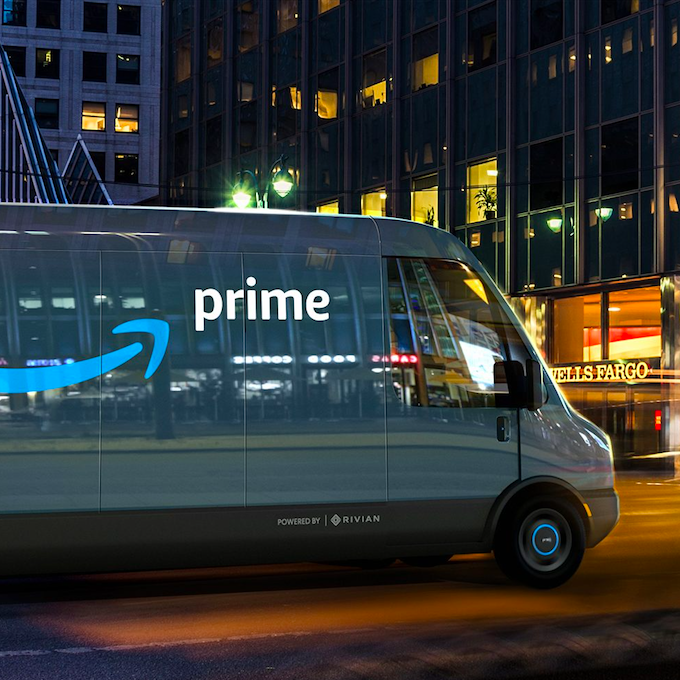
TriplePundit is covering the U.N. General Assembly and Climate Week NYC through the weekend. You can follow our coverage here.
Just before Climate Week launched, Amazon said it was placing the largest ever order of electric delivery trucks when it announced the company would buy 100,000 vehicles from the U.S.-based EV startup Rivian. Amazon CEO Jeff Bezos says the first of these would begin delivering packages to customers in 2021, while the company’s press release detailed 10,000 would be on the road in 2022, with the full complement of 100,000 vehicles in service by 2030.
Amazon’s environmental and economic reasons for betting on Rivian
Amazon, universally known for its online store as opposed to its delivery fleets, is getting serious about controlling its own logistics operations. Earlier this year, the company announced it was ending its contract with FedEx for ground transportation. This latest development indicates it is taking bold steps towards handling its own deliveries using new and cleaner vehicle technologies.
The announcement was made in concert with a broader commitment from the company to be at net zero carbon by 2040 and operate on 100 percent renewable energy by 2030. This shift includes some environmental investments; for example, Amazon has announced a partnership with the Nature Conservancy to invest $100 million for efforts in the restoration of forests, peatlands and wetlands.
In terms of the electric delivery fleet, Amazon’s order from Rivian meshes with its financial stake in the electric truck manufacturer. Amazon led a $700 million investment round for Rivian earlier this year, but to date, the EV start-up has yet to sell any vehicles into the market. Instead the company has developed both a high end electric pickup truck and SUV prototype, both aimed at the aspirational end of the consumer market with vehicles slated to start at around $70,000.
Such a shot in the arm from Amazon to both invest in the company and place such a huge order will, no doubt, be fundamental for Rivian’s commercial viability, since establishing an automotive start-up is a hugely costly proposition; think of the trials and tribulations Tesla has gone through in its quest to become a mass-market manufacturer.
Changes in how logistics companies deliver packages
Amazon’s initiative to electrify its ground transportation fleet is, however, consistent with changes afoot in the logistics space more broadly, where electrification is becoming more of an area of focus.
Last year, Ryder System Inc. announced it would buy 900 electric delivery vehicles from Chinese manufacturer Chenje Energy inc, and lease them to Federal Express, while Fed-Ex would concurrently purchase 100 of its own. All 1,000 trucks are to be operated by Fed-Ex for both residential and commercial customers in California. When this deal was announced in late 2018, it was touted as the largest ever purchase of electric vehicles in the whole of the United States which is, of course, now dwarfed by Amazon’s move.
A more tentative step was was DHL’s February announcement that it would roll out 63 electric delivery trucks to operate in the San Francisco Bay Area, beginning service this year and deployed as part of the company’s effort in becoming an emissions-free delivery company by 2050. Already, in Germany, DHL, a part of Deutsche Post, says it is the largest user of “electro-mobility” in the country, with 12,000 electrified vehicles in operation including e-bikes and e-trikes.
Over at UPS, the company currently operates 1,000 electric or hybrid delivery vehicles throughout its worldwide network, and has placed an order for 125 of Tesla’s Semi Class 8 trucks which the automaker is supposed to start producing this year. That said, UPS’s Carlton Rose, the company’s president of global fleet maintenance, stresses that OEM vehicle manufacturers as well as utilities are going to need to work with fleet operators in order to make electrification irresistible in the future, according to reporting in FleetOwner.com. Rose indicates the company doesn’t think that future is here yet, saying OEM equipment needs to both work as well as conventional options, and it needs to be at the right cost.
A step forward for the electrification of transportation?
By comparison, Amazon’s order of 100,000 Rivian trucks leapfrogs all of the pure-play logistics companies in terms of the sheer numbers of EVs the company is committing to deploy in future. Furthermore, purchasing from a startup that has yet to sell any vehicles at all is a bold move. But Amazon is known for being a game changer, and as a behemoth company it no doubt has the deep pockets necessary to bring the plan to fruition.
As Climate Week wraps up, electrification trends are the subject of one session centered on looking at ways to promote the electrification of transportation in America’s cities. The discussion will focus on the question as to whether declarations by a core of American cities to create fossil fuel-free zones could be the transformative way to speed the adoption of EVs. With urban air quality being a big concern in congested urban environments commensurate with EV technology maturing, electrification trends in the logistics industry are highly likely to build momentum.
Image credit: Rivian
Private-Sector Grantmaking Can Play a Role in Education Innovation


Several years ago, while flipping through a copy of USA Today during a business trip in China, an article about a Shanghai middle school caught my attention.
Apparently, every three years, the Organization for Economic Co-operation and Development (OECD) measures how well the world’s educational systems are preparing students for the job market. In its first year of participating in the OECD’s Program for International Student Assessment, Shanghai’s school system overtook top performers from countries like Singapore and Finland to claim the top spot on the ranking.
The feature went on to explain why. In Shanghai’s system, traditional rote memorization is replaced by immersive, hands-on learning. Rather than cramming their heads with facts and formulas destined to be forgotten after a big exam, students are challenged with complex problems that put what they’re learning in the context of the real world.
The result? Shanghai high school students are nearly 10 times more likely to demonstrate advanced problem-solving skills compared to the OECD average, as reported in USA Today and other publications including The Diplomat.
This memory has stuck with me. While some may see the Shanghai schools’ approach as a big change—maybe too big a change for the traditional methods of the U.S. educational system—the techniques they use are relatively simple, straightforward and easily replicable. And, interestingly, many of the Ph.Ds who theorized this model are Americans who came to Shanghai after trying and failing to get the techniques adopted in the States.
Even as the methods proved monumentally successful—and Shanghai’s school system continued to earn top marks on international assessments—U.S. school systems remained resistant, and our approaches have remained largely unchanged while the achievement gap widened.
Though the U.S. spends significantly more on education than other OECD countries, our students consistently underperform in math, reading and science compared to their peers in other developed nations.
Vast disparities also persist between U.S. school systems, largely along racial and economic lines. We continue to underfund schools that serve mostly low-income families. The most impoverished districts in the country receive about $1,000 less per student in state and local funding compared to the most affluent districts, according to The Education Trust. According to the American Bar Association, “Public schools today are more racially segregated than 40 years ago,” and black students are still much less likely to graduate from high school compared to white students with the same family income.
These are old problems, and we’ve known about them for a long time. So how come one of the richest nations on the planet doesn’t have better outcomes? In essence, we’re doing the same old thing and hoping for different results. And after coming on board as president of the SunTrust Foundation in March of last year, I was in a position to do something about it.
Investing in a life well spent
At the SunTrust Foundation, we focus on promoting personal and financial well-being and helping people achieve a life well spent. While many drivers contribute to personal and financial independence, we continue to find—in literature, in research and in practice—that education is critically important.
At the Foundation, we are not experts in education, but we do listen to what the experts are saying, and they’ve pinpointed two key indicators of future success. For example, research tells us that if a student is not reading at a third-grade level when they’re in third grade, they’re four times less likely to graduate from high school. On the opposite end of the spectrum, all of the longitudinal data shows that no matter your race, culture or gender, access to postsecondary education is the single most important determinant of upward economic mobility.
The U.S. continues to lag behind our peers in both of these metrics, yet we push on with the same old methods of drills, memorization and regurgitation of facts. In today’s information age, we’re deep into a knowledge-oriented nature of work that requires skills in problem-solving, reasoning and analytics. As the nature of work becomes more analytic, the nature of education has to fuel that.
As part of our investment strategy around education, we seek out and fund transformative initiatives that are saying “no” to the status quo and testing out theories similar to those that are already commonplace in regions like Shanghai and elsewhere. In other words, we’re on the hunt for new solutions to old problems.
The nature of education must follow the nature of work
When we look at the research, we see that students can retain a larger volume of more complex and sophisticated information when their method of learning is experience-based. But again, this strikes back at the issue of equitable access: To introduce experience-based learning, schools must be resourced. As funders, we feel it’s the least we can do to not only support organizations testing promising theories of change but also to ensure these solutions are affordable broadly.
For example, one of our grantees, the Girls Leadership Academy of Wilmington (GLOW), is looking to close the gender gap in science, technology, engineering and math (STEM) fields with a focus on single-gender education that it says engages “the whole girl.”
GLOW serves students—90 percent of whom are from low-income backgrounds—with inquiry-based learning techniques and hosts a maker’s lab to explore hands-on applications of lessons learned in class.
For example, it is using hands-on carpentry with a miter box to cut compound angles so students can see how math is applied in the real world. What we’ve seen through the research is that this type of hands-on application provides an indelible imprint. Students will always remember what a miter cut molding joint looks like, and that turns what they’re learning into a tangible memory that will stick with them. The lab also connects classroom learnings with 21st-century careers through modules focused on robotics, 3-D printing and other emerging technologies.
Regardless of what you might think of a single-gender model, GLOW’s work is showing success. Studies show that low-income students in single-gender schools score higher on standardized tests in math, reading, science and civics, compared to those in co-ed schools, and GLOW is part of a network that is teaching with this method in 19 cities across the U.S.
We also recently funded edX, a leading nonprofit providing online-education founded by MIT and Harvard, which is developing a low-cost bachelor’s degree called the “MicroBachelors” to bring equitable access to postsecondary education and open up new options for students. And in Atlanta, our grantee, Everybody Wins!, offers regular mentorship for young children, building on research that tells us children read at a higher level when they read with an adult regularly.
The bottom line
This is high-stakes work: Suppose we see breakthrough, innovative techniques being deployed with promising results yet we fail to help scale them quickly and, say, four years go by. Well, that’s someone’s entire high school experience. You’ve lost Johnny now. He’ll never get those four years back, and his life will be much more difficult because he wasn’t given what he needed to succeed.
Frankly, it’s hard not to get frustrated sometimes by the lack of urgency to scale solutions that have been demonstrating results for decades.
We don’t know if our approach is the right one, but in the end, that’s what innovation is about: testing theories of change and backing groups with the courage to think differently. As the nature of work continues to evolve—and the nature of a life well spent along with it—we challenge other funders, businesses and concerned stakeholders to have courage, seek out new ideas and challenge the traditional approaches in areas like education. Maybe then, we can finally put some of these old problems to rest.
This article series is sponsored by the SunTrust Foundation and produced by the TriplePundit editorial team.
Image credit: Nicole Honeywill/Unsplash
A Circular Solution for Disposable Coffee Cups Lies in the U.K.
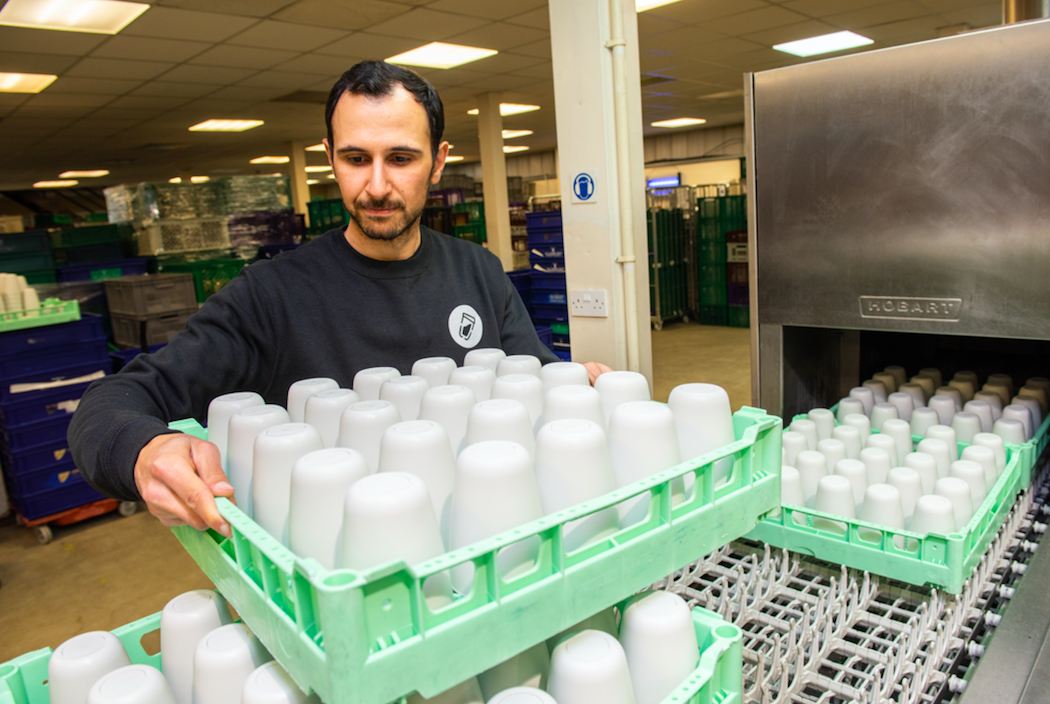
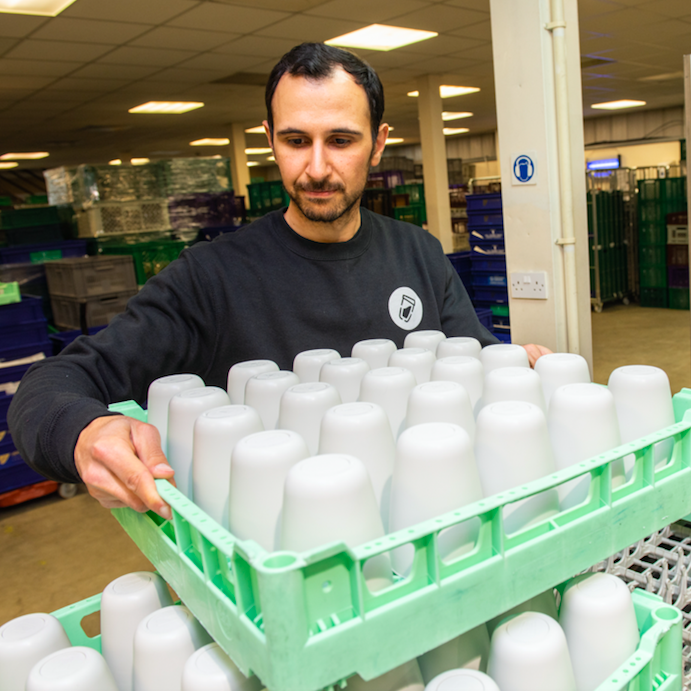
Even though the world's largest coffee chain, Starbucks, offers a ten-cent discount to consumers who use reusable cups for their caffeine fix, most of the company’s customers by far prefer that iconic paper cup. The same goes for other coffee chains and independent shops worldwide: it is estimated that 600 billion disposable coffee cups are used each year globally.
In the United Kingdom alone, 2.5 billion takeaway cups are used annually, with 99 percent of them thrown away instead of ending up at a recycling facility.
Meanwhile, as coffee shops across New York City now a surge in business thanks to the United Nations General Assembly and Climate Week, one can only imagine the number of paper cups that are ending up in the trash.
How CupClub tackles the disposable coffee cup problem
One company, CupClub—a United Kingdom-based returnable packaging service for hot and cold drinks – is reducing the number of takeaway cups used in the U.K. through its packaging systems and receptacles.
“Our mission is to eliminate single-use packaging to enable brands and retailers to empower their customers to experience takeaway without the throwaway,” said Safia Quereshi, Founder & CEO of CupClub, in a public statement. “We are building one of the world’s first returnable packaging systems that is optimized using IoT [internet of things] technology, enabling us to distribute, collect and wash packaging designed for multi-use.”
Each cup can be used 132 times. Once a cup has reached its end of life, it can be easily broken down to create new products. The business model revolves around the idea of paying per drink instead of owning a cup, which means a customer of CupClub is supporting the maintenance and infrastructure, as the company explains on its website.
Convenience for the consumer was built into the design of CupClub. The company supplies reusable plastic cups to coffee shops to forgo customers forgetting their reusable cups at home or the office. Then, customers are only responsible for taking the cups to collection points within a few days of use—most of which are at coffee shops—where the CupClub team then takes them to a commercial washing center. Once cleaned, the cups are reintroduced at one of the collection points, according to Marcus Fairs of DeZen Magazine.
“For the consumer, it is a convenient option that allows the customer to choose a high quality returnable cup in preference to a disposal one,” as stated in a Circular London case study. “For the retailer or operator, it is a reliable, cost-comparative system for the supply of cups to their outlets.”
CupClub’s technology could allow for rapid scaling up
The differentiator from other circular-approach cup offerings—such as TrioCup or Revolv—is CupClub’s technology. Each cup is trackable as each cup is fitted with a RFID tag so CupClub can track each cup’s current and past usage.
“We can tell brands where their cups are,” Safia told DeZen Magazine, “so we can ensure they don’t become roadkill or get abandoned in the environment. It’s smart packaging.”
CupClub went live in August 2018 with its first partner, a global real estate services firm. Since then, they have partnered with London-based coffee shops and have diverted over 100,000 coffee cups from landfills, according to Fast Company.
McDonald’s and Starbucks have also expressed interest in CupClub. CupClub was named one of the 12 winners of the NextGen Cup Challenge—a global innovation challenge to redesign the fiber to-go cup and was chosen to partake in the NextGen accelerator in August 2019, where the team worked through challenges such as customer needs and infrastructure challenges.
Solid design should catalyze CupClub’s growth
Since CupClub’s design approaches the disposable coffee problem with a design-oriented, systems perspective, it is a solution that will continue to scale. Its design ensures reduced disposable cup costs and new marketing channels via the CupClub app for coffee shops—and for consumers—the absence of washing and flexibility in when they can drop off their CupClub cups.
“We have combined a product, service and business model that together enable multiple retailers and brands to transition to a returnable packaging system infrastructure at a city scale,” Safia told the New Plastics Economy team. “We have what it takes to be the city bike rental equivalent of the coffee scene.”
Image credit: CupClub